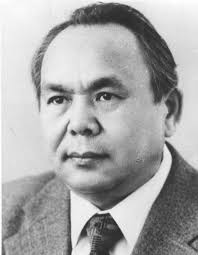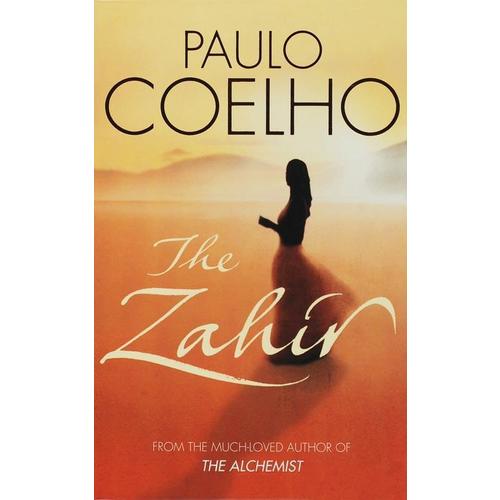Two Masters of the Pen: Paulo Coelho and Zhumagali Ismagulov
Share:
A laureate of the State Prize, a member of the Writers' Union of Qazaqstan and Doctor of Philology, Professor Zhumagali Ismagulov (1928–2011) made an invaluable contribution to the development of national journalism and literature.

Zhumagali Ismagulov
(a picture from open sources)
He headed the republican literary newspaper “Qazaq Adebieti” (“Qazaq literature”). Zhumagali Ismagulov is the author of interesting and educational essays, critical literary essays, devoted to the work of prominent Qazaqstani figures and writers, namely, Beimbet Mailin, Mukhtar Auezov, Sabit Mukanov, Gabit Musrepov, Gabiden Mustafin, Ilias Yesenberlin, Takhavi Akhtanov, Syrbay Maulenov, Gafu Kairbekov and others. Some of them were included in the authors' collections. At the same time, Zhumagali Ismagulov made a significant contribution to the development of literary translation.
For several years he was a secretary of the board of the Union of Journalists and a president of the Association of Literary Translation under the Board of the Writers' Union of Qazaqstan. He made translations of works, written by Ivan Turgenev, Anton Chekhov, Maxim Gorky, Alexander Ostrovsky. He translated articles of the Russian literary critic of the nineteenth century Nikolai Dobrolyubov and many other writers. His translations of the novels “Bereg” (“A Coast”) and “Vybor” (“A Choice”) by Yuri Bondarev, “Arktichesky roman” (“The Arctic novel”) by Vladlen Anchishkin, “V tupike” (“At a Dead End”) by Vikenty Veresaev, stories “Bikey and Maulyan” by Vladimir Dahl and “Sinyya tetrad” (“A Blue Notebook”) by Emanuel Kazakevich were highly appreciated by the writers and readers.
One of the last translations of Zhumagali Ismagulov was the translation into Qazaq of the novel of the famous Brazilian prose writer Paulo Coelho “The Zahir”. A bright representative of contemporary Latin American literature, Paulo Coelho is the author of such well-known trilogies and novels, as “The Alchemist”, “By the River Piedra I Sat Down and Wept”, “Eleven Minutes” and others.

(a picture is from open sources)
Zhumagali Ismagulov put a profound understanding of the piece of arts to be translated by him first.
Brazilian writer Paulo Coelho is by far one of the most popular writers in the world. He writes in the genre of the philosophical parable.
His heroes in search of happiness and their destiny are traveling around the world, they, like their author, are convinced that “there is one great truth on this planet: when you really want something, you will achieve it, because desire originated in the soul of the Universe. Realization of your dreams is your mission on Earth”.

Paulo Coelho
(a picture is from open sources)
In 2005, Paulo Coelho visited our country. He called Qazaqstan “a sacred land, to which an unknown force pulled me”. In his interview Paulo Coelho noted that “after the enthusiastic stories of my friends about Qazaqstan, I began to search on the Internet for everything that can be found out about this country. And the longer I searched, the more I fell in love with Qazaq culture. At that time, I started to write my next novel “The Zahir”. And by the magic of inspiration, a Qazaq guy became one of the main characters of the story. Since then, the landscapes of Qazaqstan and “The Zahir” intertwined, and the main storyline took place in the vast steppes of Qazaqstan.” After exploring the country via Internet, Paulo Coelho decided to visit Qazaqstan.
Paulo Coelho and Zhumagali Ismagulov, the translator of his novel “The Zahir” into Qazaq were personally acquainted. Zhumagali Ismagulov completed translation of the book in two and a half months. The book has a specific structure. It reminds readers an autobiography of the writer himself, but it is not an autobiography. The main character is a writer. His wife is a journalist. After ten years of marriage, she suddenly disappears. The reasons for that are unclear: either she did not have enough attention from her husband, or she herself needed to sort out her feelings. Indeed, in spite of everything, she loves her husband and, in order to preserve the feeling, she asks her boss to send her as a war correspondent to South America. There she sees how people die, how they say goodbye to life. A wounded soldier breaks off his bloody shirt and gives it her to give it to people, so that they could value their life, its every minute.
The name of the book “The Zahir” is taken from the Koran. But in the book there is no word associated with Islam. We can see it from the Preface to the book, which makes us to refer to Jorge Luis Borges’s piece of art “The Book of Fantasy”. “The Zahir” is something clear, visible, something that cannot be passed. It gradually becomes the subject of all our thoughts. The writer’s wife, who suddenly disappears, becomes such “a Zahir” for the writer.
In fact, the book is about how heroes regain their love; they find themselves, but in a new capacity. The mission to spread the energy of love took on a Qazaq guy named Mikhail. This name is not given by a chance; it is a name of the archangel. The meeting of heroes is inevitable. Exactly here, in Qazaqstan the hero has to be reborn and to become a completely different person.
He is given a new name, Nobody. In the vast steppe of Qazaqstan the hero understands how much he loves his wife. If you take geography, here you can find the “singing dune” and the artificial sea “Kapshagay”, Almaty ... Talking about people, here you can find such characters as a wise old man, “bakhsy” (a shaman or a magician), living by this sea, his grandson Dos, who is an artist. The prototype of this character was the artist who painted illustrations for the book “Zahir” by Paulo Coelho, whose name is Dosbol Kasimov.
Perhaps the secret of this book’s success lies in an unusual plot. Paulo Coelho is in the permanent search of a new and unfamiliar storyline. He has a skill to see hidden magic in something simple. It can be assumed that Paulo Coelho was looking for exotics in Qazaqstan, but he found serious material, knowledge of history, economics, people's life, ethics and culture.
An interesting dialogue took place between Paulo Coelho and Zhumagali Ismagulov. While working on a literary translation, Zhumagali Ismagulov asked Paulo Coelho, why a number of the most important scenes of the novel do not occur in the city, but in the steppe. Paulo Coelho answered: “My dear Zhumagali, having visited the Qazaq steppe, I immediately felt that its ground had retained its pristine essence. The steppe has its own magic life. The main female heroine of my story, Esther is a war correspondent. Having left the Western civilization, she found herself in Qazaqstan. A village near Almaty became her spiritual, psychological and moral shelter. She took your people as a people who managed to preserve the ancient traditions, customs, values, and the Qazaq land - as a sacred land, protected by a peaceful Tengrian sky”.
He further said that the civilization that had become alien to her was embodied in the novel by her husband, the well-known but nameless writer Nobody. Esther runs from loneliness, from lack of love from her husband. The Qazaq theme in the novel “Zahir”, besides geographic signs, is embodied, in addition to Dos, in other characters, particularly in Mikhail. It is a mystical figure associated with unearthly spheres. Mikhail is an instrument of these forces. They give him the ability to spread the energy of love. Thanks to him Esther falls in love with Qazaqstan and its people.
In response, Zhumagali Ismagulov said Paulo Coelho, that the name “Mikhail” is not typical for Qazaq people. Paulo Coelho urged him not to take everything literally. He explained that it had a conditional character.
“There are no “special” names in my book. Except may be Esther herself. She has another hidden name, which I put in the title of the book. “Zahir” is an Arabic word, it can be translated as “a prominent figure, a sage or a magician” ... The point is not in the belonging of a name to a man or a woman, but in the meaning.
The book “The Zahir”, published in the Qazaq language, is very popular among Qazaqstani readers, as well as its other versions around the world for several years now.
Share: